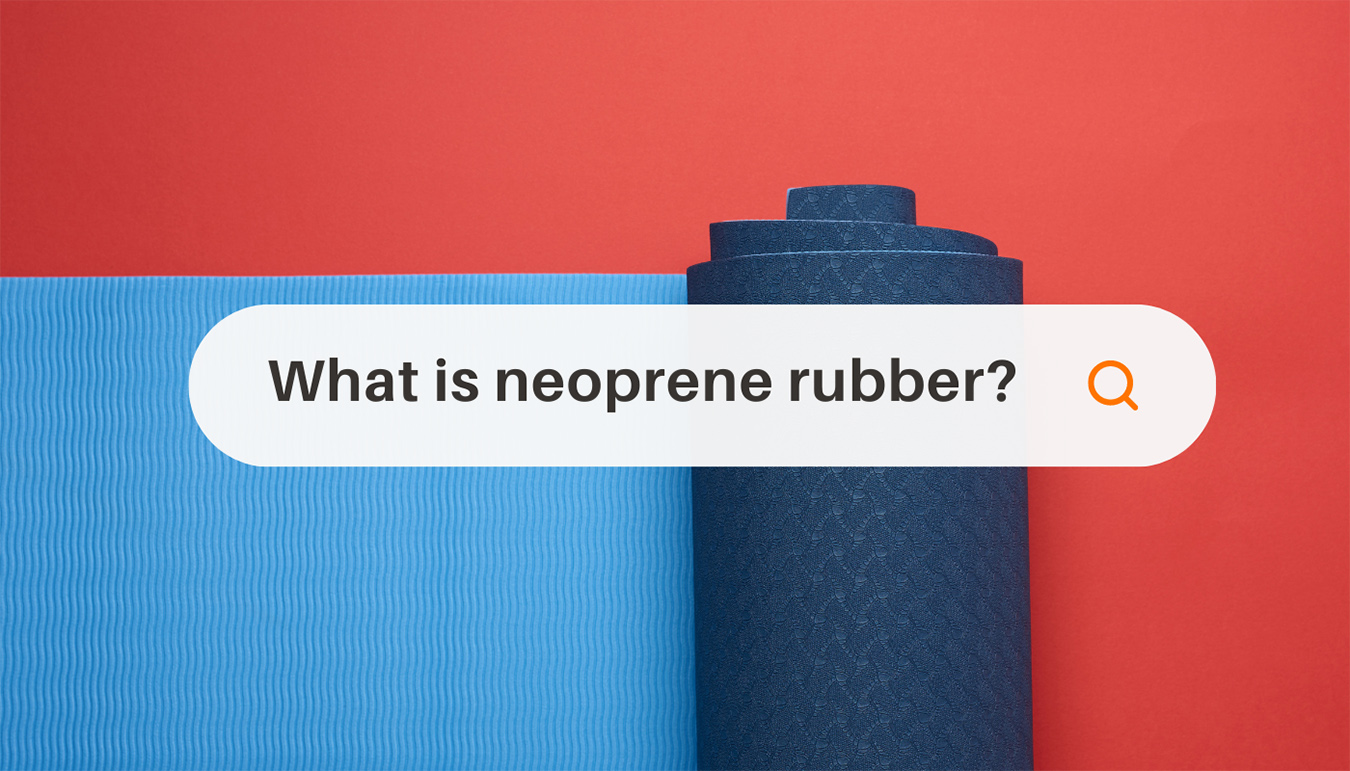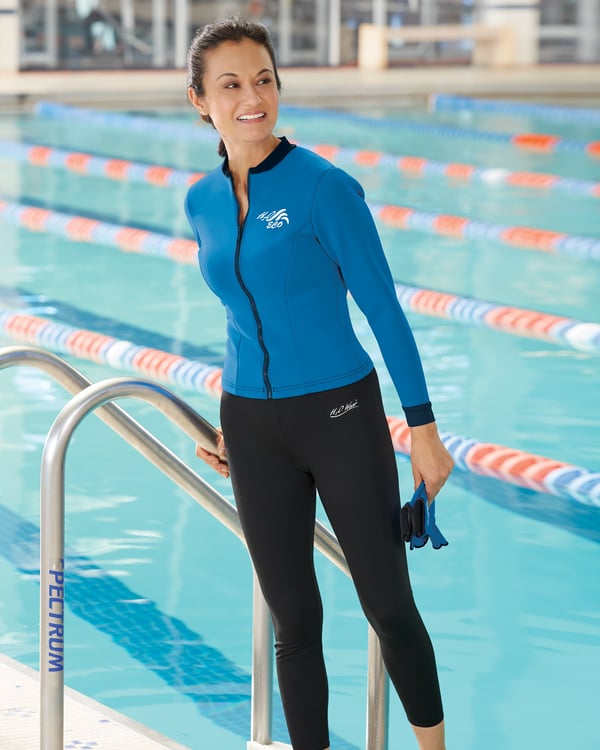Content Menu
● Understanding Neoprene: The Basics
● Key Properties of Neoprene Swimwear
● Applications in Different Water Activities
● Style and Fashion Considerations
● Care and Maintenance
● Environmental Considerations
● The Future of Neoprene Swimwear
● Video Resources
● Frequently Asked Questions
>> Q1: Is neoprene swimwear suitable for all water temperatures?
>> Q2: How long does neoprene swimwear typically last?
>> Q3: Can neoprene swimwear cause skin irritation?
>> Q4: Is neoprene swimwear worth the investment?
>> Q5: How should I choose the right size in neoprene swimwear?
In recent years, neoprene has emerged as a revolutionary material in the swimwear industry, transforming how we approach water activities and aquatic fashion. This comprehensive guide will explore the properties, benefits, and applications of neoprene in swimwear, helping you understand why this material has become increasingly popular among swimmers, surfers, and water sports enthusiasts.
Understanding Neoprene: The Basics
Neoprene is a synthetic rubber material that was initially developed as an alternative to natural rubber. Its unique molecular structure creates a flexible, durable, and water-resistant fabric that has found numerous applications across various industries. In swimwear, neoprene has become particularly notable for its exceptional combination of properties that benefit water activities.

Key Properties of Neoprene Swimwear
1. Insulation and Temperature Regulation
Neoprene's closed-cell structure creates excellent thermal insulation, making it ideal for swimming in various water temperatures. The material traps a thin layer of water between the fabric and your skin, which your body heat warms up, creating a natural barrier against cold water. This feature is particularly beneficial for open-water swimming and activities in cooler conditions.
2. Flexibility and Movement
Modern neoprene swimwear is engineered to provide exceptional flexibility, allowing for unrestricted movement during swimming and other water activities. The material stretches and moves with your body, acting like a second skin while maintaining its structural integrity.

3. Durability and Longevity
One of the most significant advantages of neoprene swimwear is its outstanding durability. The material is resistant to:
- Chlorine and saltwater
- UV radiation
- Wear and tear
- Stretching and deformation
- Environmental factors
4. Buoyancy Support
Neoprene naturally provides additional buoyancy in water, which can be beneficial for swimmers of all skill levels. This property helps maintain proper body position in the water and can reduce fatigue during longer swimming sessions.
Applications in Different Water Activities
Competitive Swimming
For competitive swimmers, neoprene swimwear offers several advantages:
- Reduced drag in the water
- Enhanced body position
- Improved hydrodynamics
- Temperature regulation during long-distance events
Recreational Swimming
Casual swimmers benefit from neoprene swimwear through:
- Increased comfort in various water temperatures
- Added sun protection
- Enhanced durability for regular pool use
- Modest coverage options
Water Sports
Neoprene is particularly popular in various water sports:
- Surfing
- Paddleboarding
- Kayaking
- Scuba diving
- Waterskiing

Style and Fashion Considerations
Modern neoprene swimwear comes in various styles and designs:
- One-piece suits
- Two-piece sets
- Rash guards
- Swim shorts
- Athletic tops
- Performance leggings
The material can be manufactured in virtually any color or pattern, allowing for creative and fashionable designs while maintaining its functional properties.

Care and Maintenance
To ensure the longevity of neoprene swimwear:
- Rinse thoroughly with fresh water after each use
- Avoid exposure to direct sunlight when drying
- Store flat or hung properly
- Hand wash with mild soap when necessary
- Avoid harsh chemicals and fabric softeners
- Allow complete drying before storage
Environmental Considerations
While neoprene offers numerous benefits, it's important to consider its environmental impact:
- Manufacturing process energy consumption
- Synthetic material decomposition
- Recycling challenges
- Sustainable alternatives development
The Future of Neoprene Swimwear
The swimwear industry continues to innovate with neoprene:
- Development of eco-friendly alternatives
- Integration of smart technologies
- Improved manufacturing processes
- Enhanced performance features
- Greater sustainability focus
Video Resources
For practical demonstrations and expert insights, check out these helpful videos:
1. [How to Choose a Wetsuit for Open Water Swimming]
2. [SKIMS Sport Swim Review | Functional or Failure?!]
3. [Neoprene Swimwear Review and Performance]
Frequently Asked Questions
Q1: Is neoprene swimwear suitable for all water temperatures?
A: Neoprene swimwear is versatile and can be used in various water temperatures. Different thicknesses are available for specific temperature ranges, making it adaptable to both cold and moderate water conditions.
Q2: How long does neoprene swimwear typically last?
A: With proper care and maintenance, quality neoprene swimwear can last 2-3 years of regular use. The lifespan depends on factors such as frequency of use, care practices, and exposure to environmental conditions.
Q3: Can neoprene swimwear cause skin irritation?
A: While most people can wear neoprene comfortably, some individuals may experience sensitivity. Modern neoprene swimwear often includes liner materials and treatments to minimize potential skin irritation.
Q4: Is neoprene swimwear worth the investment?
A: For regular swimmers and water sports enthusiasts, neoprene swimwear is often worth the investment due to its durability, performance benefits, and versatility. The initial cost is typically offset by the extended lifespan and functional advantages.
Q5: How should I choose the right size in neoprene swimwear?
A: Neoprene swimwear should fit snugly but not restrict movement or breathing. Consider trying on different sizes and styles, as fit can vary between manufacturers. Many brands provide detailed sizing guides specific to their neoprene products.





































